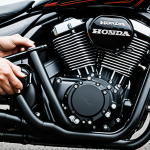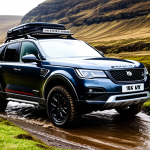Introduction to Aftermarket Suspension Lift Kits
Aftermarket suspension lift kits are a transformative upgrade for off-road enthusiasts eager to enhance their vehicle’s performance and aesthetics. But what exactly are they? Essentially, these kits consist of components designed to elevate a vehicle’s body further from its wheels. Their primary purpose is to increase ground clearance, improve off-road abilities, and provide a more commanding view of the terrain.
In the world of British off-roaders, such as the iconic Land Rover Defender and Range Rover, lift kits offer multiple benefits. Installing a lift kit empowers these vehicles to tackle rugged landscapes with greater ease. By enabling larger tires, they further bolster the vehicle’s prowess on unpredictable terrain.
Also to read : How to Get Your Car Ready for the UK’s New Euro 7 Emissions Standards: A Comprehensive Guide
Moreover, lift kits are not just about performance upgrades but also allow for personalization and aesthetic improvements, imparting a more aggressive stance to the vehicle. With a high demand for superior off-roading capability, the adoption of aftermarket suspension lift kits among British off-road models remains popular. These modifications provide owners with the versatility needed to explore off-the-beaten-path destinations confidently.
Necessary Tools and Materials
Preparation is a critical step in ensuring a successful installation of a lift kit on British off-roaders. Installation tools and lift kit components must be gathered beforehand. Essential tools include a hydraulic jack for safely lifting the vehicle, a set of wrenches, and socket sets for removing and securing bolts. Additionally, having a torque wrench on hand is vital to achieve the precise tension required for secure installation.
Topic to read : Explore the excitement of daikoku: a premier gathering for car lovers
Before diving into the project, it is crucial to familiarise yourself with the key suspension lift kit components. These typically comprise coil springs, shock absorbers, brackets, and various hardware necessary for attaching new components. Each of these parts plays a crucial role in transforming your vehicle’s performance and ensuring it navigates rugged terrain effectively.
Preparation doesn’t stop at gathering tools and components. Take preliminary steps, such as thoroughly cleaning the vehicle undercarriage to expose existing components and ensure they’re easily accessible. Review the installation instructions provided with the lift kit to comprehend the entire process. This proactive approach fosters a seamless installation journey and sets the stage for transforming your vehicle’s off-road capabilities.
Step-by-Step Installation Guide
Enhancing your off-roader with a suspension installation is a satisfying project. Following a detailed step-by-step guide ensures a smooth process and a successful off-road upgrade.
Preparing Your Off-Roader
Before starting, prioritize safety. Wear proper gear and ensure the vehicle is on stable ground. Use jack stands to lift the vehicle safely and secure it before proceeding. This reduces risks and makes the workspace safe for effective installation.
Removing the Stock Suspension
Carefully remove the existing components. Begin by unbolting the shock absorbers and coil springs. Tools like wrenches and socket sets are essential for this process. Maintain precision and patience to avoid damaging other parts.
Installing the New Lift Kit
Now, align and fit your new kit components. Start with the coil springs, followed by shock absorbers. Application of a torque wrench ensures components are securely fastened. Step-by-step progression, following the guide, minimizes mistakes.
Final Adjustments and Checks
Post-installation, verify that all parts are correctly installed. Adjust alignment to enhance performance and check suspension function. This meticulous approach ensures the vehicle is ready for off-road adventures, enhancing your driving experience.
Safety Precautions
Ensuring the safety of both yourself and your vehicle during the installation of an aftermarket suspension lift kit is paramount. First, always wear appropriate safety gear such as gloves and safety goggles. This minimizes the risk of injury from sharp components or unexpected debris.
One common safety pitfall is failing to properly secure the vehicle on stable ground before starting any work. Using robust jack stands is essential for stabilizing the vehicle. This prevents accidents caused by sudden shifts or vehicle movement during the installation process.
During installation, avoid distractions and maintain a clean workspace. Clutter can lead to misplaced tools or accidental trips, increasing the risk of injury. If you’re conducting a test drive post-installation, choose a safe, open area to slowly assess the upgrades.
Be cautious of any unusual sounds or handling issues during these drives. Address these issues immediately as they could indicate improper installation or adjustments. Safety should always be the top priority. In case of persistent issues or doubts about your installation quality, do not hesitate to seek professional assistance to ensure everything is installed securely and correctly.
Troubleshooting Common Issues
After installing an aftermarket suspension lift kit, you may encounter some common challenges. Addressing these promptly ensures optimal vehicle performance. One frequent issue is an abnormal sound emanating from the undercarriage. If you notice this, check all components for tightness using a torque wrench. Loose fittings can cause unnecessary strain on the suspension and lead to potential damage.
Irregular vehicle handling is another concern. Should you experience poor handling or uneven suspension function, double-check the alignment and ensure the lift kits are installed symmetrically on both sides. Misalignment might hinder the vehicle’s stability and cornering ability.
Sometimes, installation problems might manifest as excessive vehicle vibration. Inspect the shock absorbers and coil springs to ensure they are correctly seated. Faulty installation or low-quality components often result in suboptimal performance or premature wear.
If you’re unable to diagnose or resolve these issues independently, seeking professional assistance is advisable. An expert can provide a more comprehensive assessment and ensure the application’s longevity and efficiency, safeguarding your off-road adventures. Prioritize addressing these challenges to maintain the safety and functionality of your British off-roader.
Benefits of Lifting Your British Off-Roader
Enhancing your off-road capability with a lift kit brings remarkable benefits to your British off-roader. Primarily, it boosts the vehicle’s performance on challenging terrains. With increased ground clearance, your off-roader can easily navigate uneven landscapes, rocks, and muddy paths without damaging the undercarriage or getting stuck.
Driving experience is substantially improved as well. An elevated view benefits the driver with enhanced visibility, making it simpler to anticipate obstacles and plan routes more effectively. This not only enhances safety but also brings comfort by allowing a smoother drive over rough terrain.
Moreover, the vehicle aesthetics gain a significant lift, pun intended! Installing a lift kit transforms the look of your off-roader, offering an aggressive stance that is visually appealing and reflective of a rugged, adventurous spirit. These aesthetics are often complemented by functional upgrades like larger tires.
Customization options abound, allowing owners to personalize vehicles further. With the right enhancements, British off-roaders like the Land Rover Defender can stand out both in urban settings and in the wild, showing off both functionality and style.
Compatibility with Specific British Off-Roader Models
When considering aftermarket suspension lift kits, understanding vehicle compatibility is crucial. Not every lift kit fits all models, so selecting the right one for your specific British off-road models is necessary to ensure optimal vehicle performance and handling.
If you’re an owner of classic Land Rover versions or the adventurous Range Rovers, you’ll find that most lift kits cater specifically to enhancing their off-road capabilities. To choose the perfect kit, evaluate your vehicle’s weight, intended use, and the terrain you plan to conquer. For instance, heavier models might require more robust kits with enhanced coil springs and shock absorbers.
Additionally, consider the reputation of the brand before purchasing a kit. Established manufacturers ensure higher quality components, offering durability and better performance. Brands like Terrafirma and Old Man Emu are renowned for their reliable lift kits tailored to British off-road conditions.
Understand your vehicle’s specific needs and intended use before investing in a lift kit. This attention to detail ensures your British off-roader achieves the desired combination of enhanced driving experience, impressive vehicle aesthetics, and robust off-road capability.





